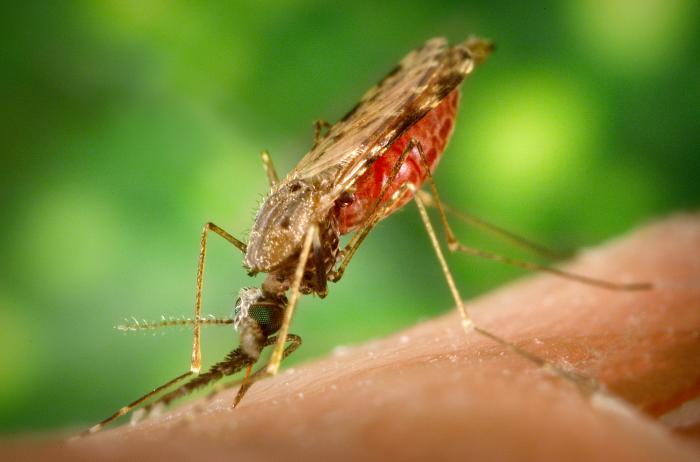Medicine in Colombia

Medicine in Colombia refers to the maintenance and restoring of human health through the study, diagnosis, and treatment of patients in Colombia.
Medicine in the precolumbian period
The medicine in the precolumbian period was practiced by selected people who also had religious duties. The Tayrona, Colimas and Panches tribes called them Mohanes or Normas. Among the tukanos and koguis they were known as shamanes and in the Pacific ocean coast tribes Jaibanás or Nieles They made the healing practices in special houses, called by the conquerors "Bujíos del diablo" (huts of the devil).[1] This medicine men received special training for several years in some sort of convents near Chía named "Cuca". No matter the name they received, the shamans were responsibles of the administration of the natural resources and the balance with the environment, besides the healing duties. The therapeutic principles were mostly empiric observations of healing properties of the plants. Some surgical procedures were performed, as observed in skulls from the muisca culture with trepanations. Don Diego Alvarez Chanca in the early XVI century wrote his “Carta al cabildo de Sevilla”, where he describes the customs and characteristics of the main ethnic groups in Nueva Granada: Arawak and Karib, with medic, botanic and economic observations. This work is pioneer in the medic and ethnographic research in the New World.[2]
Medicine in the Colonial period
The first graduated medical doctor, Alvaro de Aunón came to New Granada from Sevilla Spain, in 1597 and stayed for a short time. The first drugstore in Colombia was opened at the same time, in the main square of Bogotá by Pedro Lopez Buiza.[3]
In 1636, licenciado Rodrigo Enriquez de Andrade started the first medical university in the New Granada, in the St Bartolomé College with little success because of the prejudices against the medical career in the Spanish culture, where it was considered vulgar and proper of lower class people. Most of the medical practice in the country was provided by people without formal education.[4] The first medical book written in Colombia was "Tratado de medicina y modelo de curar en estas partes de Indias" by Pedro Fernandez de Valenzuela (1662).
In 1740, don Vicente Tomás Cansino started the medical teaching in the Rosario College (Colegio Mayor de Nuestra Señora del Rosario). The medical care at the time was made almost exclusively in the particular homes of the sick people due lo the lack of health institutions. The fist hospital in Colombia was the San Pedro Hospital, in the capital city Bogotá. The hospital started its functioning in 1564, built by bishop fray Juan de los Barrios. In 1739 was opened the Hospital San Juan de Dios[5] , built by fray Pedro Pablo Villamor.
Present time
As of 2007 Colombian medicine has been recognized as one of the most advanced in Latin America. The refractive surgery keratomileusis was developed by Ignacio Barraquer in 1964 in Bogotá. On January 10, 1985 Dr. Elkin Lucena performed the fist successfull In vitro fertilization, that allowed the birth of the first Latin American test tube baby Carolina Mendez. On December 14, 1985 the Dr. Alberto Villegas performed the first heart transplant in Latin America to Antonio Yepes.[6]
On may 20, 1994 Dr. Manuel Elkin Patarroyo received the Prince of Asturias Awards by his technical and scientific research in the development of syntetic malaria vaccine. The national constitucion was reformed in 1991, and with this purpose the general system of social security was reformed with the implementation of Law 100, that extended widely the health coverage to the population, but the economic resources to finance this reform were insufficient, causing collapse of many public health institutions and affecting the income of the medical staff. [7]
Health issues

The tropical diseases are important issues in Colombia, and major causes of death. The malaria affects near 85% of the national territory, mainly the Pacific ocean coast, the amazon jungle and and eastern savannas, with an estimated of 250.000 cases/year and a mortality rate of 3/100.000.[8] The main agent is Plasmodium vivax with 66% of the cases, except in the pacific coast, where Plasmodium falciparum causes 75% of the cases.
The yellow fever and the Dengue fever[9] are major public health concerns, due to its high epidemic potential, high mortality rate and wide distribution of Aedes aegypti. The colombian government develops vaccination campaigns against yellow fever in a regular basis.[10]
The Santander Department and nearby areas are endemic to Chagas disease. Other diseases such as Leishmania, rabies, Venezuelan equine encephalitis virus and West nile virus are also present in Colombia.[11] The snakebites are big concerns, because the shortage in antivenom supplies countrywide.[12]
Different forms of malnutrition affect severely the population, specially childs under five years, with moderate to severe rates of malnutrition of 21% and iron deficiency anemia of 23%.[13] (see aguapanela).
See also
References
- ↑ "Noticias Historiales de las Conquistas de Tierra Firme en las Indias Occidentales" Written by Fray Pedro Simón, circa 1570
- ↑ http://www.gfmer.ch/Colombia_Pilar/HistoriaColonia.htm
- ↑ http://www.abcmedicus.com/especialidad/medicos/2/id/55/historia_medicina_colombiana.html
- ↑ http://www.compumedicina.com/historia/hm_main.shtml
- ↑ http://www.scc.org.co/documents/hospital%20san%20juan.pdf
- ↑ http://www.compumedicina.info/cursos/p0005.htm
- ↑ http://www.deslinde.org.co/Dsl36/dsl36_la_ley_100.htm
- ↑ http://web.unab.edu.co/editorialunab/revistas/medunab/pdfs/ed719.pdf
- ↑ http://www.medicosgeneralescolombianos.com/Dengue.htm
- ↑ http://www.disaster-info.net/desplazados/informes/fiebreamarilla/fiebreamarillaene2004.htm
- ↑ http://web.unab.edu.co/editorialunab/revistas/medunab/pdfs/ed719.pdf
- ↑ http://www.col.ops-oms.org/docs/estadisticasmps/MORDEDURA%20SERPIENTES%202004.ppt
- ↑ http://www.unicef.org/colombia/05-nut.htm